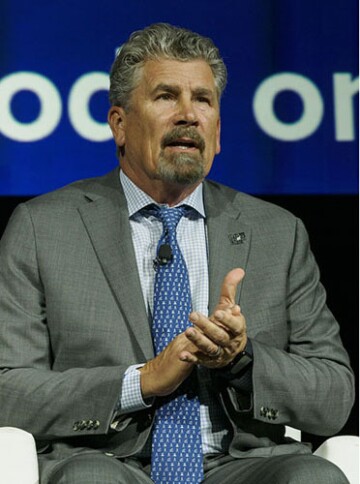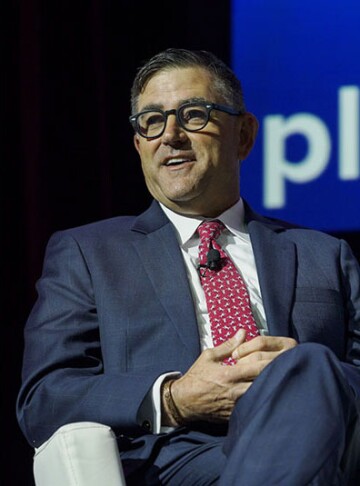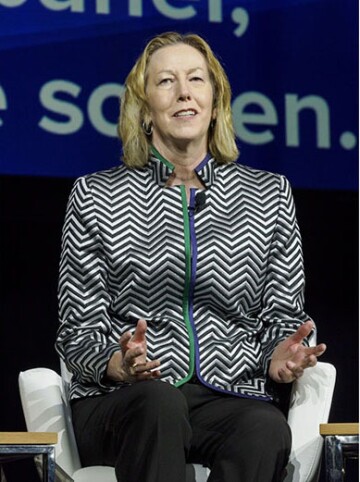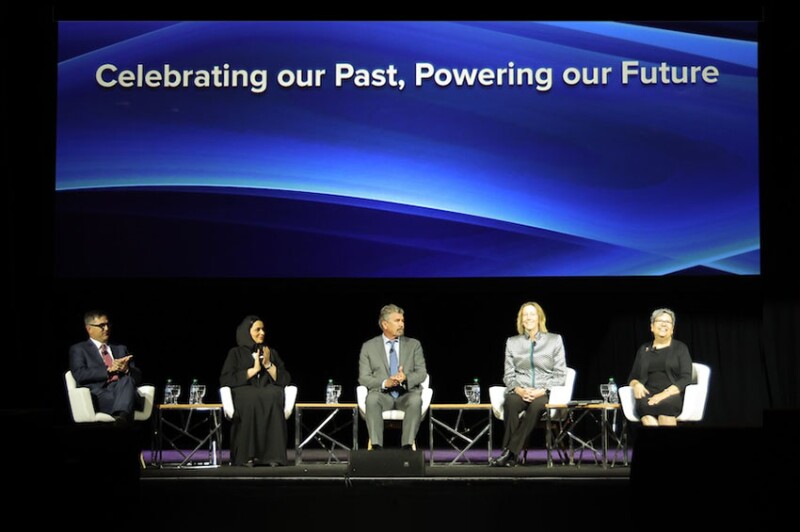Oil and gas leaders see a bright future as the industry collaborates to solve its biggest challenges—sustainably and affordably meeting demand while reducing emissions.
While that set of challenges is commonly referred to as the energy trilemma, 2024 SPE President Terry Palisch said on 23 September during the opening session at SPE’s 100th Annual Technical Conference and Exhibition (ATCE) that he likes to call this “the energy opportunity.”
He said the industry possesses the technology and expertise needed to explore for and develop the oil and gas needed to supply affordable and reliable energy, whether from onshore or offshore, unconventional or conventional resources.
Speakers were upbeat about the industry’s outlook.
“I'm an optimist, and I believe that the future of our industry looks very bright,” Helmerich & Payne President and CEO John Lindsay said.
ADNOC Offshore CEO Tayba Al Hashemi said artificial intelligence (AI) computing needs will require the industry to deliver more energy.

“To use AI, we need energy,” she said, noting using ChatGPT, a generative AI technology, to search requires much more energy for computer processing than a normal search does. “We know that people will use the AI more and more as we are progressing with our AI solutions and technology. Therefore, we would continue to need energy. AI needs energy, and energy needs AI.”
Woodside Energy CEO and Managing Director Meg O'Neill agreed with the expectation that energy demand will grow.
“If you start from the data, you look at the population growth, economic development, the number of people who still don't have access to reliable energy, it's a clear signal that energy demand is going to grow,” she said. “The key question, and what will be interesting is, ‘How do we expand energy systems to be able to meet that increase in demand?’ Oil is going to be part of the mix. Renewables will be part of the mix.”
Which brings up the question of emissions reduction.
Halliburton President and CEO Jeff Miller, who is also serving as general chair for 2024 ATCE, said, “When this industry makes something important, we do get it done, and I think decarbonization is going to happen at a similar type of pace.”
For example, he cited Halliburton’s pivot to electric frac fleets as a “meaningful step” to reducing emissions.
Similarly, H&P is relying on highline power for some of its drilling rigs, which is reducing emissions. Lindsay said the drilling contractor has also reduced emissions through a program that automates engine operation based on load demand.

“Historically, an engine would be turned on and turned off by one of our rig hands at the direction of the company manager. With this technology that we've developed, the engines are running based on the amount of load that's required,” he said.
O’Neill said Woodside’s philosophical approach to reducing emissions is to “design out, operate out, and offset.”
For example, she said, the best time to tackle emissions reduction is before building a facility.
“We are spending a lot of time in the design of our new facilities to make decisions that will result in a facility that has lower overall emissions,” she said. That design phase focuses on “big things like the selection of power generation machinery” as well as smaller things because every little bit helps, she added.
At the same time, Woodside is working to figure out how to decarbonize an existing LNG plant, she said.
“Can we bring in power from the grid and build out solar power? Can we build on-site hydrogen to convert our compressors from gas fuels to hydrogen fuels? Can we incorporate CCS? So there is a lot of cutting-edge technology work to figure out how we can take a massive step forward to decarbonize an existing LNG plant,” she said.
Collaboration, Innovation Are Key
Miller said he is a big believer in collaboration and innovation.
“In a collaborative environment, almost anything is possible. And I would absolutely never bet against this industry, just because the technology and what can be done, is yet to do, is always breathtaking,” he said.

Innovation, he said, starts with a spark of an idea, maybe when someone sees a way to do something better.
“I always worry about if that spark is making it to a place where it can then be funded,” and ultimately turned into a product, he said.
Miller said he almost squelched the idea of running sleeves for a certain kind of completion in Angola.
“I said, ‘You know, guys, get back to work doing your thing.’ Well, fortunately, they didn't listen to me, and that's what became the deepwater ESTMZ (Enhanced Single-Trip Multizone)” completion system, he said.
Sometimes innovations aren’t requested by customers, Lindsay said.
“I think back to the early days of the FlexRig, 20 years ago,” he said. “Nobody asked us to build this advanced-technology rig. And the early days were really, really challenging.”

Robotics are one innovation that Woodside is harnessing for multiple use cases.
“We think about the potential use of robotics to reduce risk and get people out of harm's way and or reduce costs,” O’Neill said.
One example is using an unstaffed surface vessel supporting a robotic untethered autonomous underwater vehicle for offshore pipeline inspection. Another is using robots for flare power inspections.
“That's the sort of work that you couldn't do with humans while the flare is on. But again, happy to send a robot in, and if the robot's destroyed, that's a few dollars out of pocket, but the safety risk has been eliminated,” O’Neill said.
AI, Data, and the Future
Al Hashemi said AI is changing the pace of change itself.
“We need to capitalize on the utilization of AI solutions to unlock the potential,” and introduce efficiency and speed to operations, she said.
AI, for starters, can help make sense of all the data companies like ADNOC Offshore have collected.
“How much of this data are we using?” she asked.
The only way to maximize the value of the data is through AI solutions, she said.
“This is what we are doing today with our partners to maximize the value of the data we have in our system,” she said.
And she doesn’t see AI as a job killer.
“AI will not replace people, will not replace the engineers, but AI will replace the engineer who's not using the AI in future,” Al Hashemi said.


